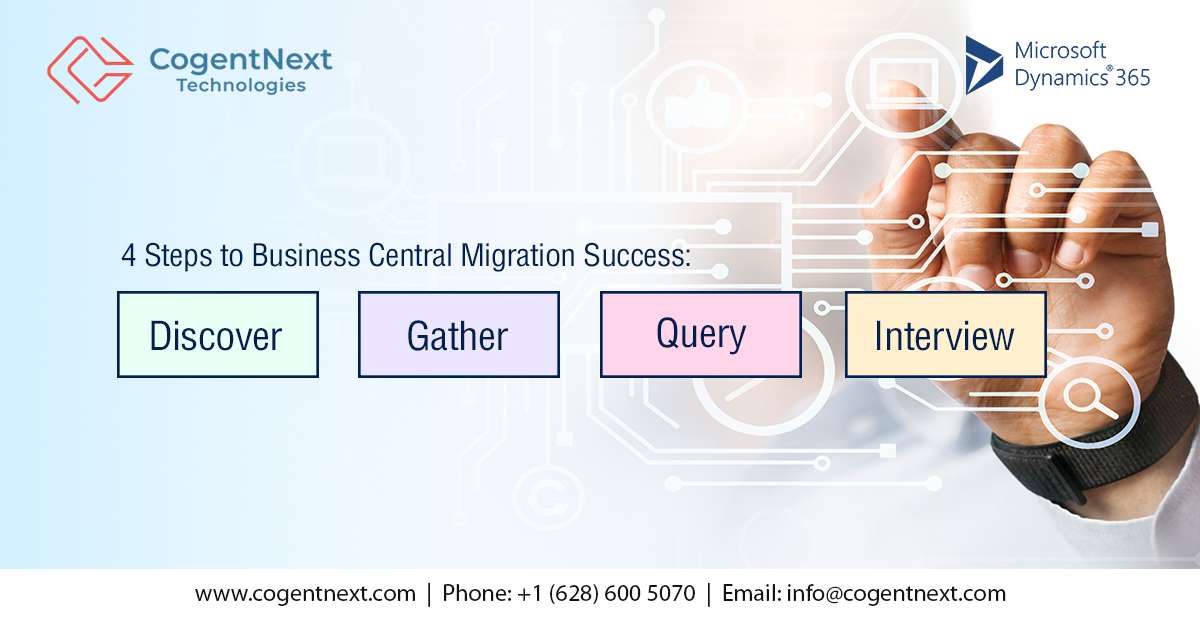
From Dynamics GP to Business Central: Liftoff into the Cloud!
When it comes to transitioning from Microsoft Dynamics GP to Business Central, it’s important to understand the strengths and weaknesses of both solutions. Microsoft Dynamics GP is a solid solution that has been the backbone of many enterprises for decades, including yours. If you’re reading this, you might just be one of those organizations considering the move. While GP isn’t going anywhere – Microsoft is still actively developing it – it is NOT a cloud ERP solution like Dynamics GP to Business Central. Working with cloud-native software, such as Dynamics GP to Business Central, brings additional benefits, including cost savings, and scalability, and it aligns you with the most innovative solutions going forward.
Dynamics 365 Business Central is Microsoft’s mid-market Cloud ERP solution. Powerful, feature-rich, and fully integrated with other Microsoft Business Applications, it is the best path to the cloud for existing GP customers.
Are you considering a move to the cloud?
Migrating your existing data and business processes to a new software solution is no small undertaking. However, with a thorough and time-tested approach, you can be reaping the benefits of the cloud in no time!
Why You Should Make the Move Dynamics GP to Business Central

Of course, migrating to another system isn’t something you do on a whim. However, many companies find themselves at a crossroads; circumstances force them to decide which direction to take. Here are a few of those key moments:
There is no one formula for achieving a successful implementation. One reason is that AI technology is a constantly moving target; thus best practices continue to evolve. However, the following are general guidelines that provide a balanced approach:
- You want to take advantage of cloud hosting. True, GP can be accessed remotely in a sort of hybrid cloud setup, but it has many limitations. Business Central has been built from the ground up for cloud computing and integrates tightly with Microsoft 365 (formerly Office), Sales, Marketing, Customer Service, Field Service, and Project Service Automation – all part of the Dynamics 365 family. Or, if those apps represent too much complexity or expense, Business even has CRM features built-in – bringing all your data under one roof. Software and hosting become SaaS – Software as a Service – or you can implement it within your own Azure private cloud.
- You want to leverage new technologies and features. While GP is still actively developed, the bulk of Microsoft’s investment is in the Dynamics 365 line. New features are being developed to increase end-user productivity, help you analyze your data in new ways, and much more.
- You are currently running an older version of GP and need to upgrade. Of course, that too is an expense and not a trivial undertaking; is it worth it to invest that time and money into GP? If it’s been years since your last upgrade, you could be looking at significant costs and even the need to retrain your users, which closes the gap between an upgrade and moving to a more modern solution.
- You’ve outgrown your current GP implementation. Some companies reach the point where they would need to re-architect their GP implementation because of significant business process changes, restructuring, or other reasons. Customizations, integrations, add-ons, and other factors increase the complexity of such projects – once again, an opportunity to consider a move to Business Central to leverage the newer platform.
So How Do We Get from Dynamics GP to Business Central?
Here’s a brief overview of the necessary steps for migrating to Business Central:
- Establish viability (financial return) for the migration
- Requirements gathering of the following:
- Review Chart of Accounts
- Determine reporting requirements
- Evaluate business processes and needed customizations
- Determine what 3rd-party add-ons and integrations are needed
- Make a “wish list” of features beyond basic requirements
- Choose a hosting option (SaaS Cloud, On-Premises, or Private Cloud)
- Develop estimates and project plans
- Data migration (Here’s where we can lend our expertise for a smooth transition)
- Configure and customize Business Central (and any add-ons) for your unique needs
- Aid your users through the transition with training
Of course, that just gets you off the ground. You’ll need a partner to provide ongoing support as well.
Of course, that’s only a sampling of the large organizations that are relying on Flutter for their development needs. Take a look at the growing list yourself – there are thousands of amazing apps already on the market!
Can We Migrate Our Data to a New System?
Yes. Here are some types of information that can be moved over, so you don’t miss a beat:
- Chart of Accounts
- General Ledger Accounts, summary transaction history, and open years
- Customers and Open Receivables
- Vendors and Open Payables
- Inventory data
- Sales, account terms, and shipping information
- Historical data is brought over into Business Central Extension tables. More data can optionally be stored in Azure Data Lake and still be leveraged for analysis and reporting.
You Don’t Have to Go It Alone!
We at CogentNext have assisted many clients – large and small – to upgrade their existing Microsoft ERP software or migrate to a modern solution. We have the experience, and we’re committed to your success. With our proven, time-tested implementation processes, we can help make your move to the cloud a rousing success!
Contact us now to learn more, and to receive a free consultation.
By Chandra Subramanian, CogentNext Technologies
